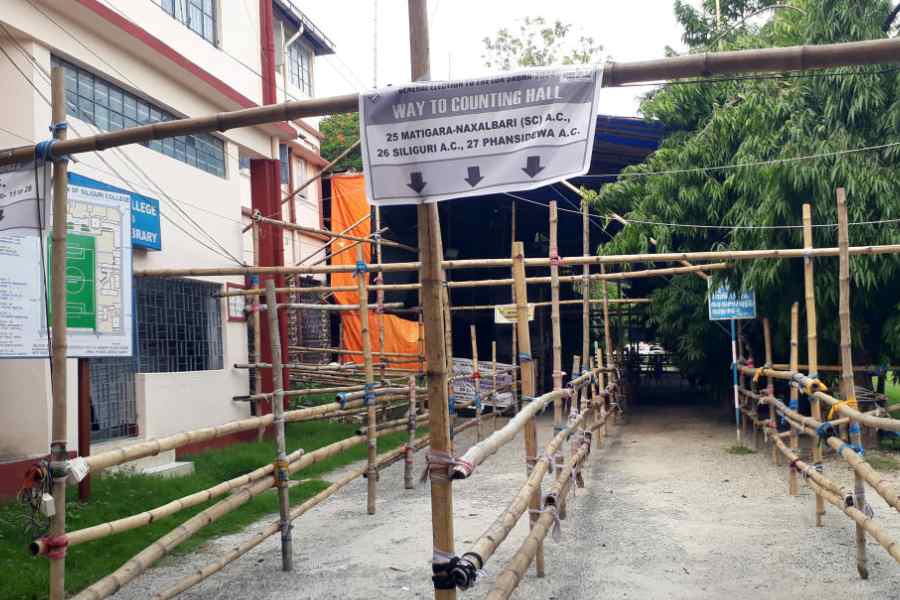Bengal recorded its lowest voter turnout in 25 years in the recently concluded Lok Sabha elections.
The state, historically known for high voter participation, recorded 79.17 per cent turnout — the lowest since 1999 when the average was 75.59 per cent.
According to Election Commission data, the state recorded 81.76 per cent voter turnout in the last Lok Sabha elections, 82.22 per cent in the 2014 general election and 81.42 per cent in the 2009 parliamentary polls. In 2004, the turnout had dropped to 79.87 per cent, a tad higher than this year’s turnout.
Not only in terms of the Lok Sabha elections but also when compared to the Assembly polls, the voter turnout this year has been low. In the 2021 Assembly polls, the state recorded 81.56 per cent voter turnout, while it was 82.66 per cent in 2016, 84.33 per cent in 2011 and 81.97 per cent in 2006.
Though this dip in percentage is evident in almost all the seats in Bengal, in at least 14 constituencies representing one-third of the state’s 42 constituencies, the polling percentage has decreased by more than 3 per cent.
In Jangipur of Murshidabad district, the voter turnout has dropped by 4.97 per cent. In 2019, Jangipur had a voter turnout of 80.69 per cent but this year it has fallen to 75.75 per cent.
Jangipur, however, is not an isolated case. The polling percentages in Malda, Murshidabad and South Dinajpur have also been significantly low. In Malda South, the voter turnout this year is 4.92 per cent less than in the last Lok Sabha polls, decreasing from 81.01 per cent in 2019 to a mere 76.09 per cent.
In north Bengal constituencies such as Alipurduar, Darjeeling and Raiganj, the voter turnout has fallen by nearly 4 per cent. Specifically, Darjeeling and Alipurduar have seen a decline of 3.95 per cent, while Raiganj has experienced a 3.43 per cent drop. Cooch Behar is the only constituency in north Bengal where the polling percentage has decreased by a slender 1.78 per cent.
Poll observers are of the opinion that a significant number of people in this part of Bengal go to other states for work. In the previous elections, they used to visit the state to cast their votes but this time they didn’t turn up and this could be a possible reason behind the low turnout.

The Siliguri College, where votes will be counted, on Monday. Picture by Passang Yolmo
“Several migrant workers in Bengal hail from Cooch Behar, Murshidabad, Malda and South 24-Parganas. Before the Covid-19 pandemic, they would return to the state to vote. However, since the onset of the pandemic, their visits have ceased, which is a major factor contributing to the low voter turnout,” said political analyst Biswanath Chakraborty.
A member of the West Bengal Migrant Workers’ Welfare Board said around 2.2 million migrant workers had registered on the Karmasathi-Parijayee Shramik portal, a dedicated database for the state’s migrant workers.
However, the board estimates the actual number of migrant workers to be close to 4 million.
Similarly, there are at least six constituencies in south Bengal where voters’ turnout has dropped by more than 3 per cent. In Purulia, the turnout decreased by 3.89 per cent.
Similarly, Birbhum witnessed a dip of 3.37 per cent, closely followed by Asansol with a 3.35 per cent decrease.
In Krishnanagar and Bolpur, the turnout dropped by 3.12 per cent and 3.06 per cent, respectively. Near the city, Howrah and Dum Dum experienced a dip of 3.05 per cent and 3.11 per cent, respectively.
Diamond Harbour is the only constituency where the polling percentage is nearly the same compared to the last election. In 2019, Diamond Harbour recorded a turnout of 81.98 per cent and this time it has come down to 81.04 per cent.
Trinamool Congress general secretary Abhishek Banerjee has won twice from the seat and is contesting for the third time.
The Election Commission believes that the scorching heat and Cyclone Remal, which struck the state during the polls, may have prevented voters from participating in the democratic process.
“There was low voter turnout across the nation and our state was no exception. However, compared to other states, our polling percentage was higher. The election took place during the summer, which is one of the main reasons for the low turnout. Also, Remal hit the state in the midst of the polls, causing people to be scared to leave their homes,” an official at the chief electoral office said.
Political observers, however, argue that the widespread violence and bloodshed in the last few elections, ongoing threats and intimidation from political parties, along with unemployment and migration to other states in search of work, have likely led to voter apathy towards the electoral process.
“Election in Bengal has become a problem for the people. They are irritated with the hooliganism of the parties and this might have turned them away from the polling stations,” a political observer said.
Counting prep
Counting for the 42 Lok Sabha constituencies in Bengal will be conducted on Tuesday at 55 centres under tight security provided by 92 companies of the Central Armed Police Forces (CAPF).
There will be 418 counting rooms and a total of 4,944 counting tables. A three-tier security system will be implemented in and around the counting centres.
The innermost tier of security within the counting centres will be managed exclusively by the CAPF, with one company deployed at each centre. The second and third security tiers will be managed by the state police forces, which will also include personnel from the armed forces.
Responding to a plea by Howrah BJP candidate Rathin Chakraborty, Calcutta High Court on Monday asked the EC to ensure there is no temporary staff in the counting process.










